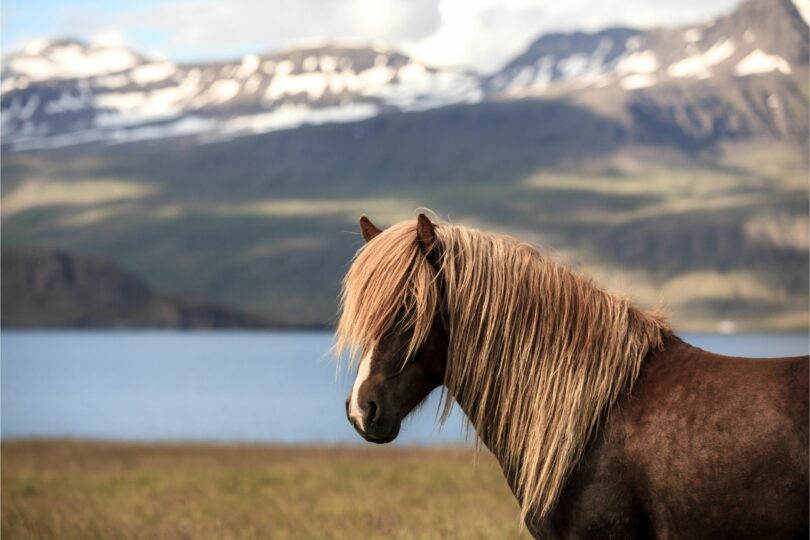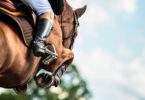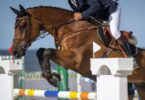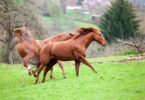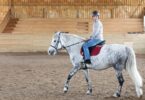Hot to Trot? Hot to Tölt!
“What in the world is that horse doing…?” This is not an uncommon phrase to hear on the sidelines of a local show when a gaited horse enters the ring for the first time. In addition to a walk, trot, and canter, certain breeds of horses are designated as “gaited.”
This means they exhibit additional gaits. There are many gaited breeds; each has unique traits (and gaits) that differentiate them from each other. It takes a keen eye and a lot of practice to identify various gaits and their associated breeds, but this article will give you a head start!
These fabulously flashy movers garner attention as parade horses, trail mounts, and show horses. Gaited horses, and those who train them, are sometimes few and far between. Some breeds are incredibly rare. Keep reading for a peek into the fast-stepping gaited horse world.
Gaited Horses: A definition
A gaited horse has intermediate gaits other than the basic four gaits displayed by non-gaited horses (walk, trot, canter, and gallop). These extra gaits are generally more comfortable for the rider to sit and more efficient for the horse to perform.
Gait could also be described as “way of going.”
What gaits are different between a “gaited” horse and a non-gaited horse?
Gaited horses may have any combination of “normal” gaits (walk, trot, canter) plus another 2-4 unique gaits that may be man-made or natural to the horse. Some of these additional gaits include:
Fox Trot: This gait is faster than the flat-footed walk. The foxtrot is a diagonal gait like a standard trot, however the front foot leaves the ground slightly before the hind foot. According to the breed standard, a quality foxtrot has no more than two feet off the ground at a time. The Missouri Fox Trotter is a breed that displays this gait.
Flat Footed Walk: An evenly-timed four-beat gait with a head shake. This gait results in a lot of movement in the horse’s back, which the rider has to follow. The Flat Walk is a similar gait but with less motion, resulting in a smoother gait for the rider. The Tennessee Walking Horse displays this gait.
Pace: Fast, lateral 2 beat gait where the horse moves both legs on the same side of the body simultaneously. Common in Standardbreds, Icelandics (flying pace) and sometimes Morgans.
Tölt: This is the traditional gait of Icelandic horses. It is an even, 4 beat gait with high stepping knee action. The tempo can vary from slow to very fast.
Slow Gait: This is a manmade 4 beat gait exhibited in 5 gaited Saddlebreds.
Rack: Another man-made 4 beat gait shown in 5 gaited Saddlebreds and sometimes Morgans and Standardbreds.
Paso Fino, Corto, and Largo: A 4 beat lateral gait with a distinctly even and fast paced footfall cadence that maximizes smoothness. Fino is the slowest speed of this gait and Largo the fastest (with the longest stride).
What do you call a non-gaited horse?
Outside the gaited horse world, non-gaited horses are just normal horses and gaited horses would be specifically referenced as such.
Within the gaited horse community, most horsemen refer to non-gaited horses as either trotting horses or 3-gaited horses, referring to the walk, trot/jog and canter/lope that non-gaited horses tend to exhibit.
Gaited Breeds
Gaited horses come in all shapes, sizes, colors and types. There are gaited breeds unique to every region of the world. The next list includes some common gaited horse breeds.
Morgan
Morgans are an American breed, moderately sized and are truly all around horses. They are used today for everything from therapeutic riding, sport horse competitions, driving, liberty, trails and more.
Interestingly, most Morgan horses are actually not naturally gaited; however, many Morgan horses have been found to perform gaits like a rack, fox trot, or a pace, especially in the skilled hands of a trainer.
Fun Fact: According to the Association, Morgan horses have the oldest traced stud book in America. The Morgan horse breed can be traced all the way back to founding sire “Figure” owned by Justin Morgan and foaled in 1789 in Vermont.
Standardbred
The Standardbred was established in the 1800’s in the United States. A horse of medium build, most won’t exceed about 1200 pounds and are described as rugged, all around horses. They’re typically black, bay, brown or chestnut in color.
Standardbreds are known primarily in the harness racing world for their lateral gait, the pace. Pacing horses have been clocked at up to 30 mph! Standardbreds may be either trotters or pacers, or they could both trot and pace (although less common for racing Standardbreds).
Fun Fact: This breed is named after the breed standard that granted entry to the association. In the 1800s, horses were required to pass a 1 mile trotting test in under 2 minutes 40 seconds to be registered. Pacers typically run this test in, at or under, 2 minutes.
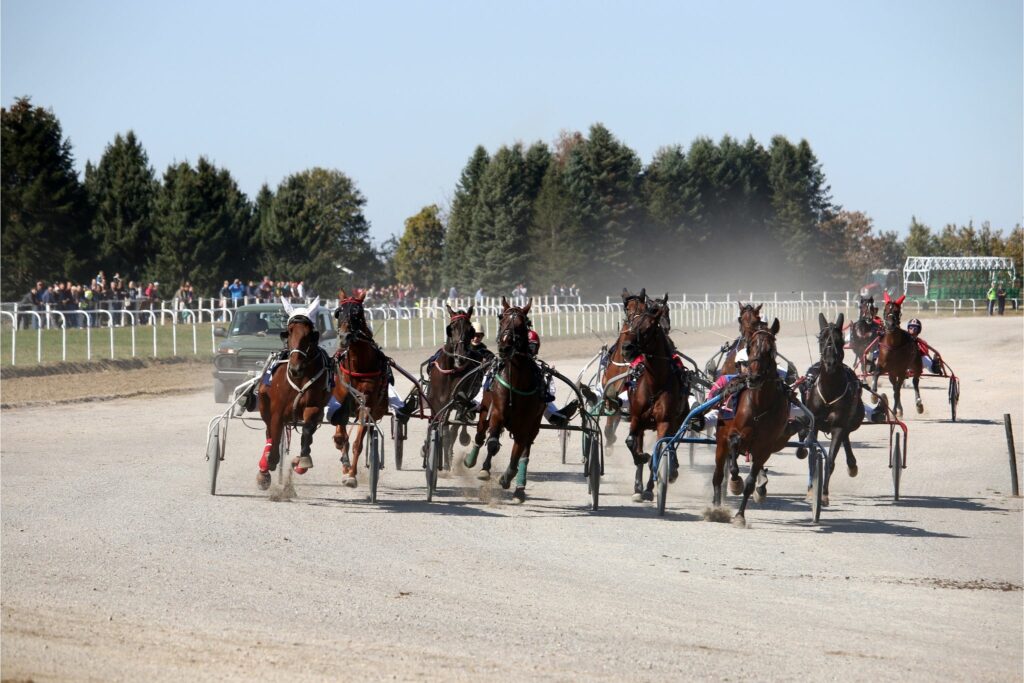
Photo Cred: Canva
Missouri Fox Trotter
These surefooted horses are largely used for pleasure riding on trails and over distances. Described in modern day as a true pleasure horse, the Association claims that over 90% of horses registered as a MFT are used for pleasure and trails. This is testament to their good nature and reliability.
These horses exhibit the following gaits: Flat foot walk, Fox trot, and canter.
Fun Fact: This breed was created out of the need for a quick moving but smooth riding horse to get early businessmen, such as doctors and mailmen, across towns quickly.
Icelandic Horse
Sometimes confused with ponies, this is a small, but mighty, horse breed from Iceland. Most commonly, they are bay, brown, black and chestnut but may be any color. Bred for riding, Icelandic horses are smooth and have fast, ground covering gaits that are appealing to pleasure, trail, and show riders alike.
Icelandics boast an additional two gaits over that of an average 3 gaited horse— the Tölt and the flying pace.
Fun Fact: The Icelandic breed has been uniquely preserved due to strict Icelandic law that prevents both the import of horses to Iceland and the prevention of exported horses from returning to Iceland after they leave.
American Saddlebred
I’ve heard these long-bodied equines affectionately referred to as “noodle-breds” due to their longer than usual neck and body length. They come in a whole range of colors, markings and sizes ranging anywhere from 14 to 17 hands.
They are affectionate, smart, and athletic show horses for a variety of disciplines. These horses come in two gaited varieties:
- 3 gaited – exhibit at the walk trot and canter.
- 5 gaited – exhibit at the walk, slow gait, trot, canter, and rack.
Fun Fact: The American Saddlebred has earned the nickname of the “peacock of the horse world” with their expressive faces and flashy movement.
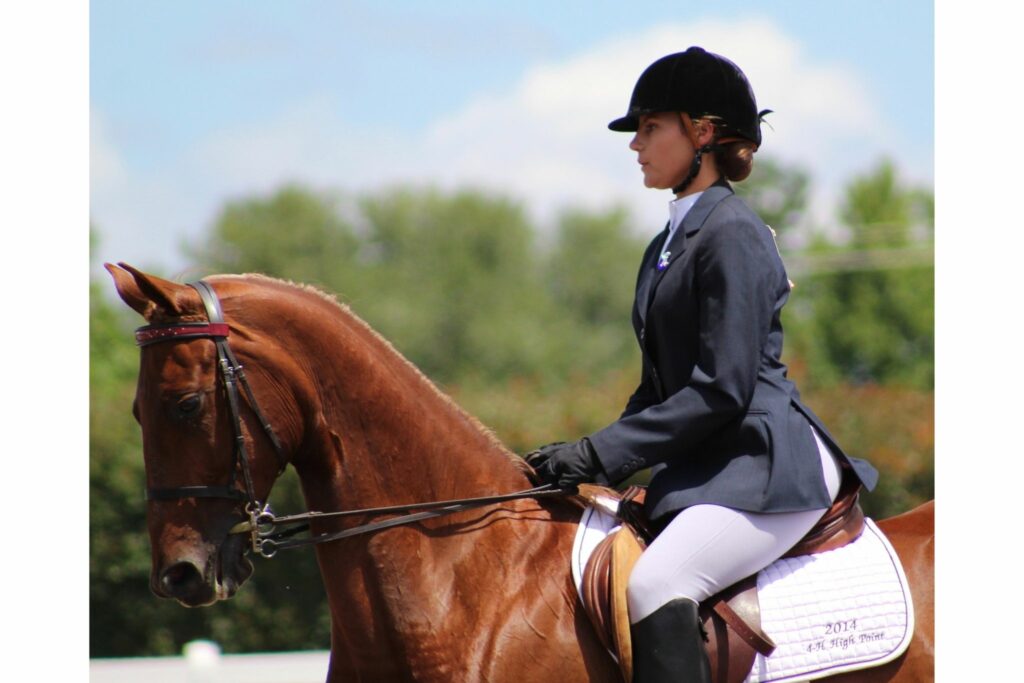
Photo Cred: Canva
Tennessee Walking Horse
This is another breed with upright conformation, proud head carriage, a long mane and tail, and a variety of color options. The Tennessee walking horse, AKA “Walkers,” range in size from 14.3-17 hands and are used for pleasure, show, trail, ranch working, and sport divisions.
Walkers gait naturally in a flat footed walk, a running walk, and canter. Tennessee Walkers have been known to rack, pace, or even fox trot as well, but those gaits are never asked for in a show environment.
Fun Fact: The Tennessee Walking Horse is smooth in all of their natural gaits. The canter of a Tennessee Walker is described as almost feeling like a rocking chair or a child’s rocking horse.
Paso Fino
Our only South American Breed on this list, the Paso Fino has a very exciting gait that is highly unique. These fast stepping and stout horses max out at 15.2 hands with most averaging less than 14.2 hands. Paso Finos have a more rounded body type compared to some of the more angular breeds like a Tennessee Walker, Standardbred, or Missouri Fox Trotter.
The Paso Fino has a unique 4 beat lateral gait that is performed at multiple speeds and at varying degrees of collection. It almost looks like the horse is rapidly tip-toeing forward.
- Paso Fino – Slow
- Paso Corto – Mid-speed
- Paso Largo – Fast
Fun Fact: According to the breed association, the Paso Fino’s gait has earned the reputation of being “the smoothest horse in the world.” This truly special horse absorbs up and down motion by keeping more feet on the ground at a time and moving the feet quicker than other horses in order to “catch” the downward motion and keep the horse’s back, and the rider in a stable position.
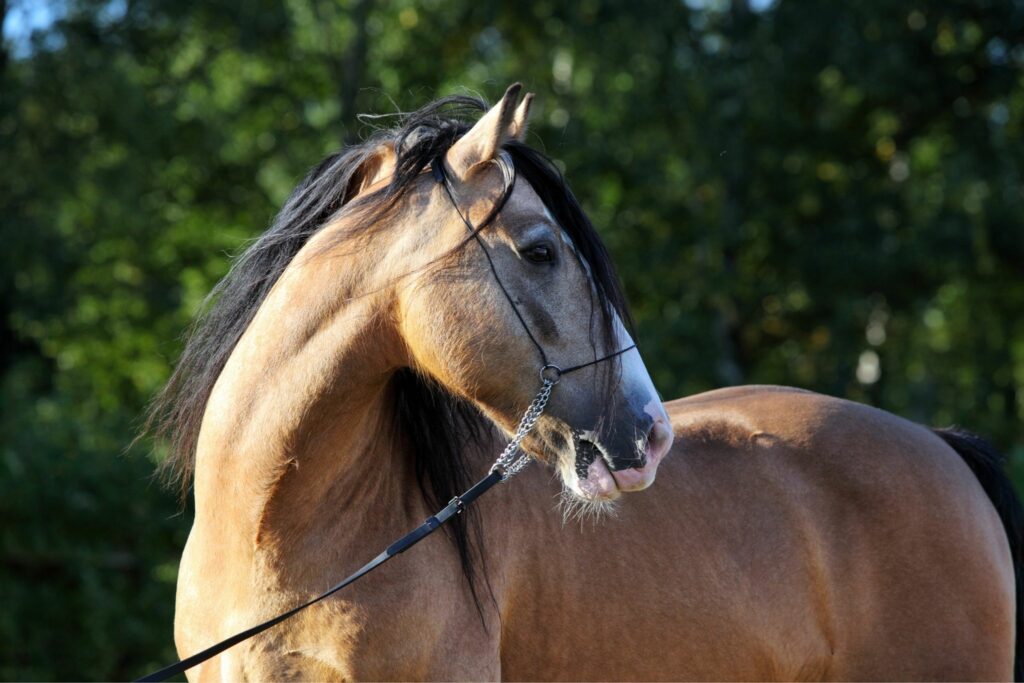
Photo Cred: Canva
Benefits to riding gaited horses:
- Smooth gaits
- Surefootedness
- Appealing for older riders, those with back or other upper body injuries
- Fast moving gaits
- Smart and versatile
- Many sizes and shapes—a horse for every kind of rider
What events do gaited horses excel in?
With the proper training and preparation gaited horses can excel in most events and disciplines, but gaited horses are most commonly used for pleasure and
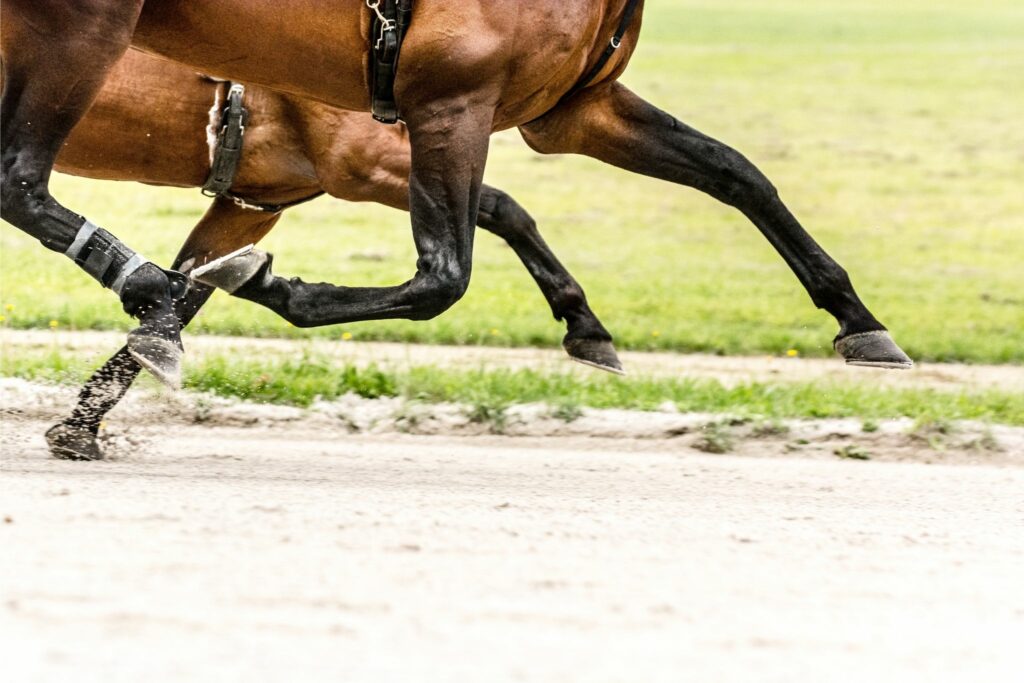
Photo Cred: Canva
What can you do with a gaited horse?
Gaited horses make for versatile equine companions. I have personally witnessed many gaited horses become barn favorites with their sweet personalities, intelligent natures, and smooth rides.
These versatile horses can do just about anything you like, with the right instruction.
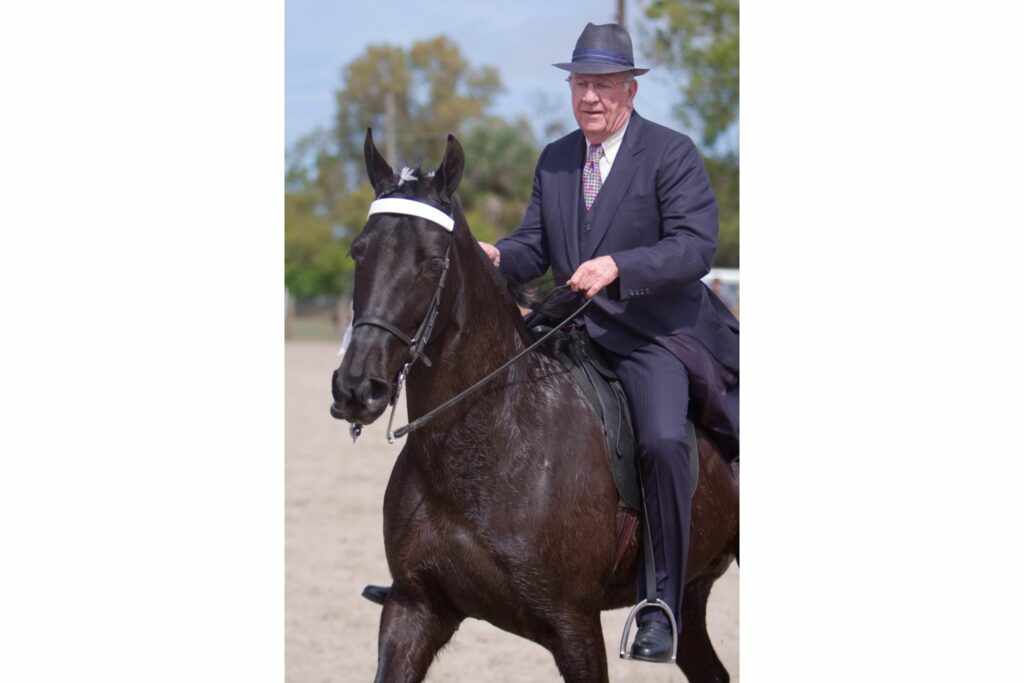
Photo Cred: Canva
Drawbacks to Gaited Horses
There are tons of benefits to gaited horses, but there are a few hurdles to be aware of. Foremost, depending on the area that you’re in, you might struggle to find gaited horses and trainers that are familiar with them.
What can’t you do with a gaited horse?
If you plan to show in jumping events, trail, or traditional
Are gaited horses more prone to certain injuries?
The silky smooth way of moving that gaited horses have means that they are absorbing much more of the energy and concussive force than the rider would compensate for on a 3 gaited horse.
The difference means that you could run into lameness issues, notably muscle, tendon and ligament strain or lesions, bone spavins, and locking stifles.
These issues are prevalent in all riding horses, but due to the lack of widespread understanding of these variable gaits, many gaited horses have lameness issues that sadly can go undiagnosed.
Frequently Asked Questions
Q: How do you ride a gaited horse?
Gaited horses are trained in a very similar way to other riding and carriage horses however, special training methods and riding techniques are used to both accentuate and enhance the natural gait.
A trainer or instructor familiar with gaited horses can help cultivate the best version of the horse’s natural ability.
A main difference is positing action by the rider—rather, you sit for the duration of the stride.
Q: Are Friesian horses gaited?
Friesian’s are not naturally gaited, however, speaking from experience, the high-stepping action and foot fall pattern of a Friesian is usually much smoother than most other trotting breeds.
Q: Are quarter horses gaited?
Quarter Horses are not naturally gaited horses.
Q: Are Appaloosa horses gaited?
Just like Quarter Horses, Appaloosas are not gaited.
Q: What are some large, gaited horse breeds?
Saddlebreds, Standardbreds, and Tennessee Walkers top the height chart of this list. Tennessee Walkers are likely to be more heavily bodied and could likely support more weight than the finer boned and more naturally athletic bodies of the Standardbred and Saddlebred.
Parting Thoughts
Gaited horse breeds are both unique and versatile. Want to learn more? Check out this article on gaited horses for beginners!
P.S. Enjoy this article? Trot on over to:
- How to Ride a Horse for Beginners (Basics, Safety, Mistakes)
- 7 Ancient Horse Breeds With Historic Influence
- Dark Horse of Your Dreams: Fun Friesian Horse Facts
- Horse Photography (Pro Tips, Settings, Editing, Examples)
- 29 Horse Coat Color Variations (Beginner Photo Guide)
- How Horses Sleep: A to Zzzz Guide to Equine Rest
- A Guide to Horse Gaits: Terminology for Beginners
- How Much Do Horses Cost & How You Can Actually Afford One
- I Want a Horse But Can’t Afford One. Now What?
Sources
Morgan Horse: https://www.morganhorse.com
Standardbred: https://www.equinewelfaresociety.org/post/standardbred-get-to-know-your-equine-breeds
Missouri Fox Trotter: https://mfthba.com/the-breed/history-of-the-breed/
Icelandics:
https://www.funiceland.is/facts/wildlife-of-iceland/icelandic-horse/
https://icelandics.org/the-icelandic-horse
American Saddlebred: https://www.asha.net/aboutus/theamericansaddlebred/
TWH: https://twhbea.com/the-breed/conformation/
Soring: https://www.humanesociety.org/resources/what-soring
Paso Fino: https://www.usef.org/media/equestrian-weekly/five-things-to-know-about-paso-finos

